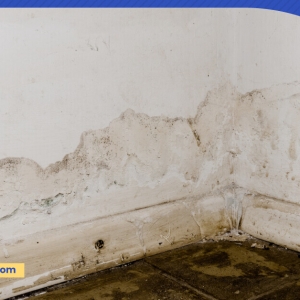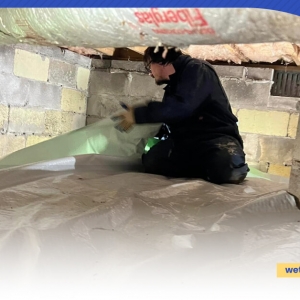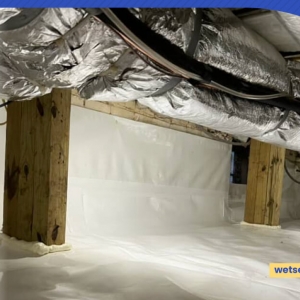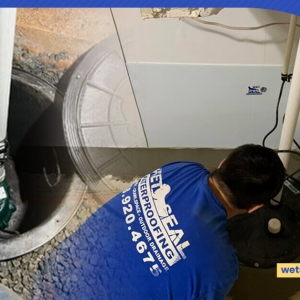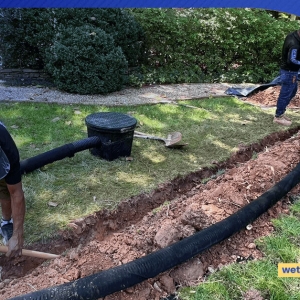The often-neglected crawlspace beneath your home is crucial in maintaining a comfortable and healthy living environment. Proper insulation and waterproofing are key components in ensuring the integrity of your home’s foundation and the overall quality of indoor air.
In this blog, we delve into whether you should replace your crawl space insulation during waterproofing endeavors.
The Role of Crawl space Insulation
Understanding the Function: Crawl space insulation is a barrier between your home and the elements beneath it. It helps regulate temperature, prevents energy loss, and aids in moisture control.
Benefits of Proper Insulation: Installing and maintaining effective crawl space insulation offers a range of advantages:
- Energy Efficiency: Insulation reduces heat transfer, keeping your home warmer in winter and cooler in summer, which can lead to lower utility bills.
- Moisture Control: Insulation helps prevent excess moisture from infiltrating your crawlspace, which is vital for avoiding mold growth and structural decay.
- Indoor Air Quality: A well-insulated crawlspace contributes to healthier indoor air by preventing dampness and mold spores from spreading.
Waterproofing and its Importance
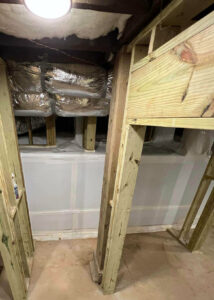
The Significance of Crawlspace Waterproofing: Waterproofing your crawlspace is a fundamental step in preventing water-related issues that could damage your home’s foundation, compromise its structural integrity, and affect the health of occupants.
Common Water-Related Issues
Water intrusion in crawlspaces can lead to
1. Mold and Mildew: Excess moisture promotes the growth of mold and mildew, which can negatively impact indoor air quality.
2. Structural Damage: Water can erode the foundation and weaken the structural elements of your home.
3. Health Hazards: Mold and mildew growth can lead to respiratory problems and allergies.
Factors Affecting Insulation During Waterproofing
Effects of Water Damage: Water infiltration can significantly degrade existing insulation, reducing its effectiveness and leading to other issues.
Assessing Insulation Condition: Inspect the condition of your existing insulation to determine if it’s still functional or if replacement is necessary.
Waterproofing Methods and Insulation Impact: Different waterproofing methods, whether exterior or interior, may affect the insulation differently. Vapor barriers and encapsulation systems can also influence insulation durability.
Signs That Replacement Might Be Necessary
Indicators of Compromised Insulation: After waterproofing, watch for signs such as:
1. Waterlogged Insulation: Insulation soaked with water loses its insulating properties and becomes a breeding ground for mold.
2. Mold Growth or Decay: Visible mold growth indicates a moisture problem that may require insulation replacement.
3. Odors and Musty Smells: Unpleasant smells can indicate moisture accumulation and insulation deterioration.
4. Determining Replacement: Consider factors such as the extent of water damage, insulation material, and cost-effectiveness when deciding between replacement and salvage.
Consultation with Professionals
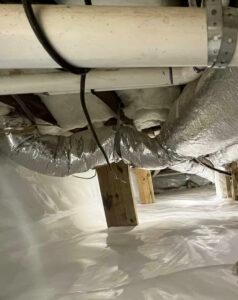
Importance of Expert Involvement: Professionals specializing in waterproofing and insulation assessment can provide valuable insights into your crawlspace’s condition.
Professional Assessment: Experts can accurately evaluate the quality of insulation after waterproofing, helping you make an informed decision.
Obtaining Multiple Opinions: It’s wise to gather multiple opinions and quotes from professionals to ensure you make the best choice.
Making an Informed Decision
Weighing Pros and Cons: Evaluate the advantages and disadvantages of insulation replacement in the context of waterproofing.
Considering Long-Term Benefits: While replacement may incur upfront costs, the long-term benefits in energy savings and prevention of issues could outweigh the investment.
Balancing Insulation Quality and Waterproofing: Strive to balance choosing high-quality insulation and effective waterproofing solutions.
DIY vs. Professional Replacement
Exploring DIY Options: DIY insulation replacement might seem cost-effective, but it’s crucial to understand the complexities and risks involved.
Risks of DIY Approach: Inadequate installation can lead to poor insulation performance, increased energy bills, and ongoing moisture problems.
Benefits of Professionals: Hiring experienced professionals ensures proper installation, guarantees optimal results, and minimizes future complications.
As you contemplate the relationship between crawls pace insulation and waterproofing, remember that both aspects are integral to your home’s overall health and integrity.
Strive to maintain a dry and well-insulated crawlspace to ensure your property’s longevity and its occupants’ well-being. Seek expert advice and assess your specific needs before making any decisions.
Take Action Now!
Don’t let a damp, mold-prone crawl space compromise the safety and comfort of your home. Contact us today to schedule a consultation with one of our experts. Discover how crawl space encapsulation can transform your Atlanta home into a haven of cleanliness, health, and durability. Your dream home is just a call away!
Call us at +1 678-920-4675 or Email us at staydry@wetsealwaterproofing.com and Visit our website at www.wetsealwaterproofing.com
Stay Connected with WET SEAL WATERPROOFING on Social Media! Join us on Facebook for updates and more.
Take the first step towards a better home environment with WET SEAL Waterproofing – your partner in crawl space encapsulation excellence!

